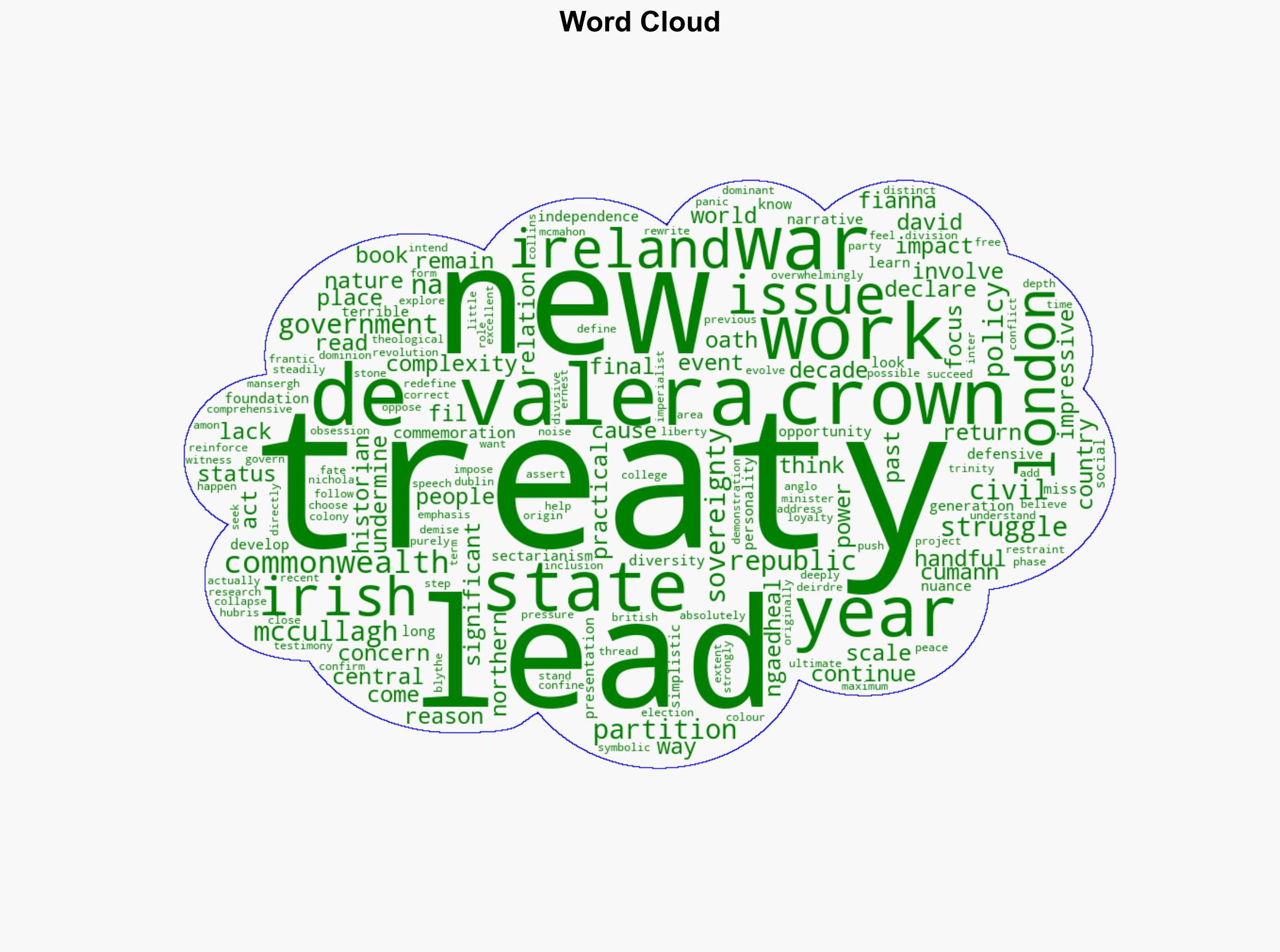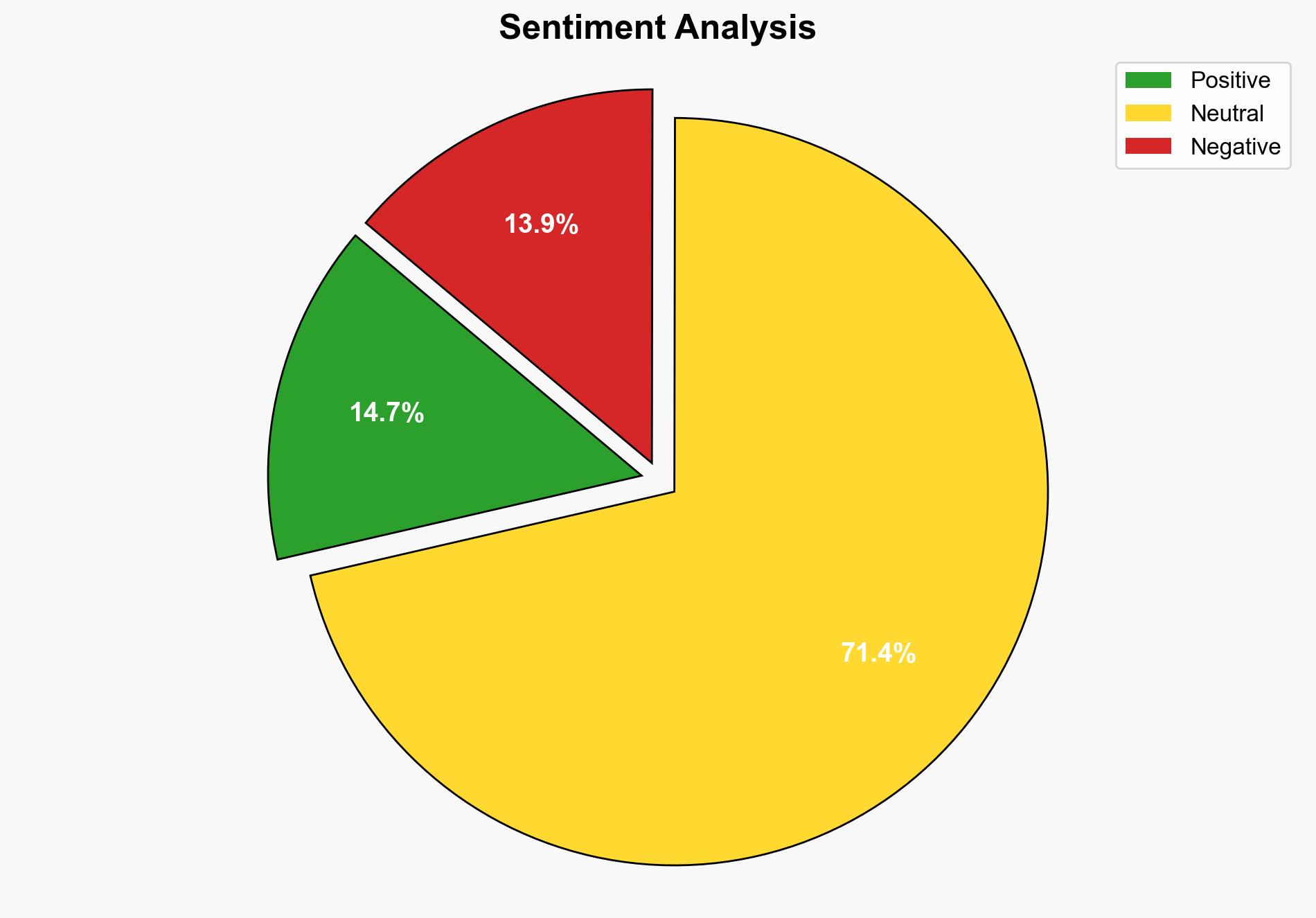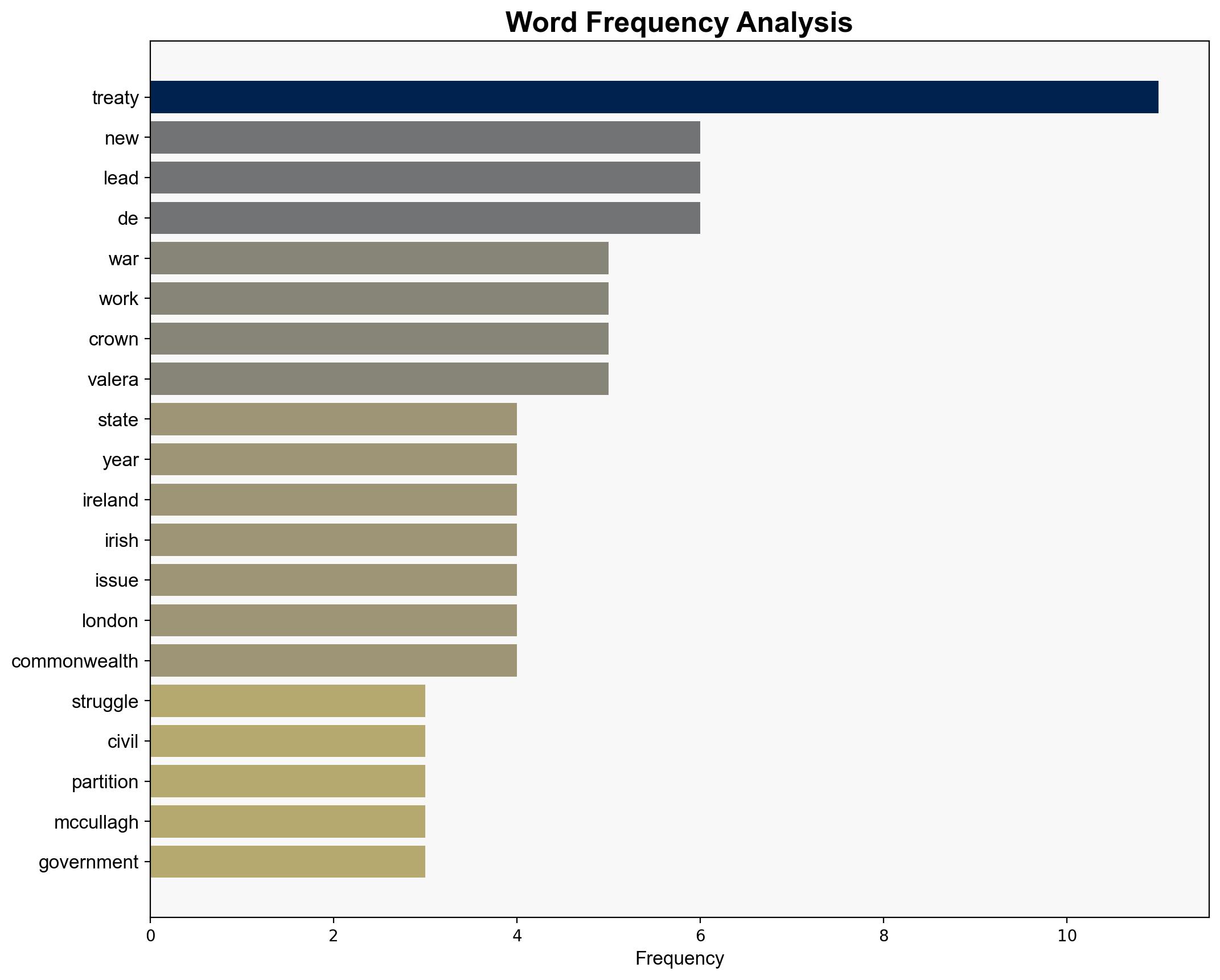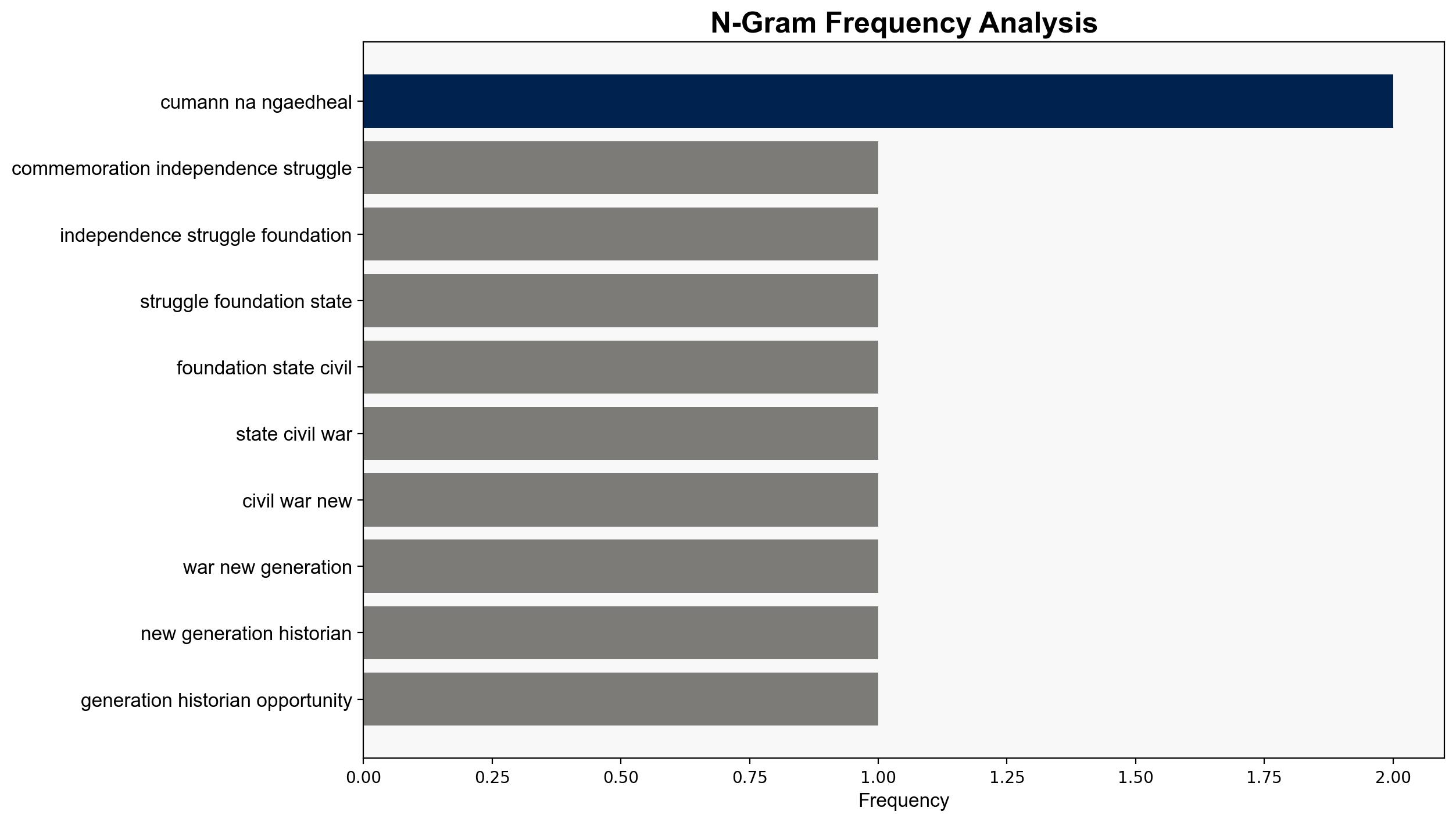From Crown to Harp – How the Anglo-Irish Treaty was undone 1921-1949 Deserving of wide readership and debate – The Irish Times
Published on: 2025-10-30
Intelligence Report: From Crown to Harp – How the Anglo-Irish Treaty was undone 1921-1949 Deserving of wide readership and debate – The Irish Times
1. BLUF (Bottom Line Up Front)
The analysis suggests that the Anglo-Irish Treaty was systematically dismantled through strategic political maneuvers and evolving national identity, rather than being a direct consequence of external pressures or internal discord alone. The hypothesis that the Treaty’s undoing was primarily driven by internal political evolution is better supported. Confidence level: Moderate. Recommended action: Encourage further historical analysis to understand the implications of past political strategies on current geopolitical relations.
2. Competing Hypotheses
1. **Internal Political Evolution Hypothesis**: The dismantling of the Anglo-Irish Treaty was primarily driven by internal political evolution and strategic decisions by Irish leaders, notably Éamon de Valera, who sought to redefine Ireland’s sovereignty and international status.
2. **External Pressure Hypothesis**: The Treaty was undone due to external pressures, including British political maneuvers and international geopolitical shifts, which forced Ireland to adapt its stance on sovereignty and independence.
Using ACH 2.0, the internal political evolution hypothesis is more supported by evidence of strategic actions taken by Irish leaders, like de Valera’s policies and constitutional changes, which were aimed at maximizing sovereignty and redefining Ireland’s international status.
3. Key Assumptions and Red Flags
– **Assumptions**: The analysis assumes that Irish political leaders had the autonomy and strategic foresight to dismantle the Treaty independently. It also presumes that external pressures were secondary to internal political dynamics.
– **Red Flags**: Potential cognitive bias in underestimating the influence of British political strategies and international pressures. The narrative may overlook the complexity of interdependence between internal and external factors.
– **Inconsistent Data**: Lack of detailed exploration of British responses and international context during the period.
4. Implications and Strategic Risks
– **Patterns**: The strategic dismantling of the Treaty reflects a broader pattern of post-colonial states redefining sovereignty.
– **Cascading Threats**: Misinterpretation of historical actions could influence current geopolitical strategies, potentially leading to tensions in UK-Ireland relations.
– **Potential Escalation**: Historical narratives could be leveraged in contemporary political discourse, impacting regional stability.
5. Recommendations and Outlook
- Encourage comprehensive historical research to provide nuanced understanding of the Treaty’s dismantling.
- Scenario-based projections:
- **Best Case**: Enhanced understanding leads to improved diplomatic relations and conflict resolution strategies.
- **Worst Case**: Misinterpretation fuels nationalist sentiments, exacerbating regional tensions.
- **Most Likely**: Continued academic debate refines historical understanding, influencing current policy decisions.
6. Key Individuals and Entities
Éamon de Valera, Leo Varadkar, Ernest Blythe, Stephen Kelly, John Costello
7. Thematic Tags
national security threats, regional focus, historical analysis, geopolitical strategy





